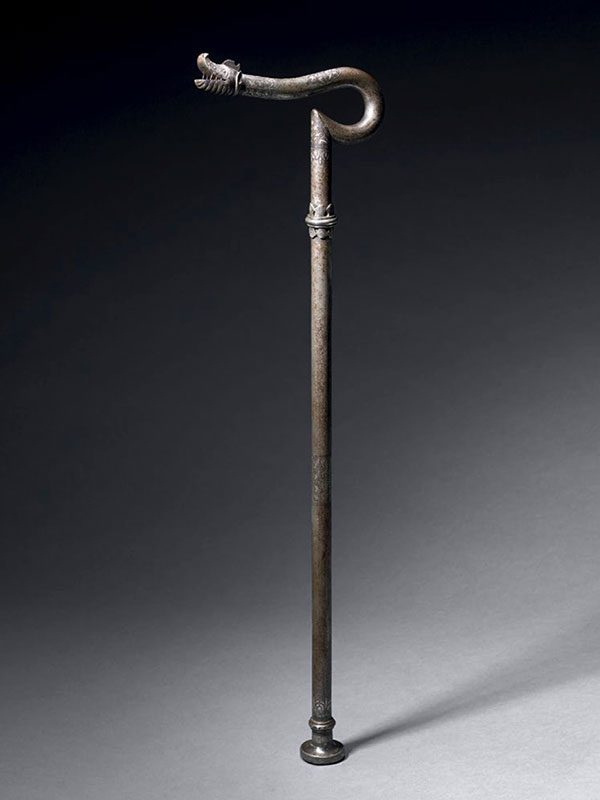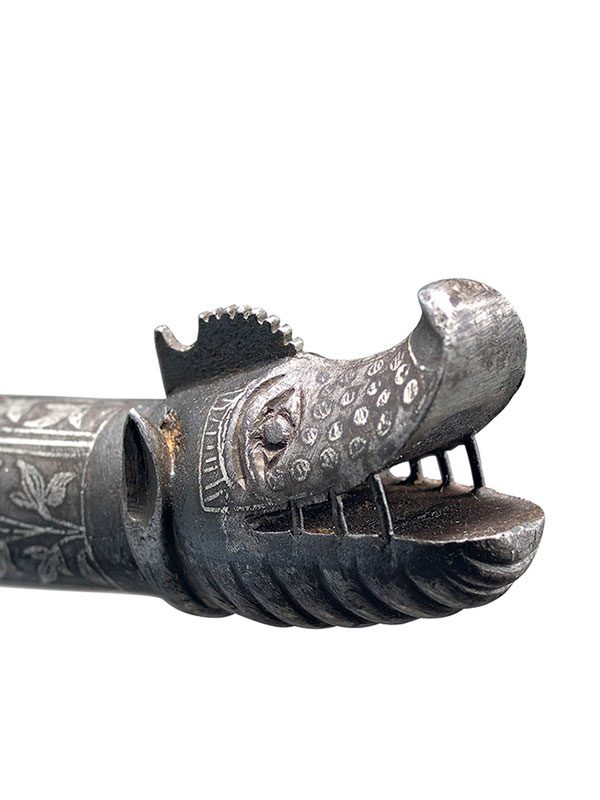Steel dervish crutch (Zadar Takiyah)
A solid cast, heavy steel crutch, or short prop. The crutch pommel terminates in a detailed makara head with gaping mouth, curled-up snout and ribbed chin. An applied pierced and cut collar sits on the tubular body. The crutch is decorated with silver koftgari in floral patterns. The shaft terminates in a wide flat base providing stability when used.
Although this dervish crutch, unlike the other crutch in this catalogue, does not contain a blade, it is heavy enough to be used as a mace. The technique used to decorate this crutch is known as koftgari, a term that originates from Persian; ‘koft’ meaning ‘interwoven’, and ‘kofter’ translating to ‘gilder’ or ‘gold beater’. This technique involves etching out a pattern on steel and laying pure gold, or silver wire on top of the etched line. The wire is then hammered into the metal according to the pattern. The piece is then heated and hammered again, after which the surface is polished with porous stone. The technique was particularly popular in Iran and India from the 17th to the 19th century and was commonly used to decorate arms and armour.[1] The decoration on the present crutch is typical of Indian metalwork and can be compared to that seen on bidri wares.[2]
- Elgood, R., Firearms of the Islamic World, London 1995, no. 94b, p. 148. Also: Skelton, R., The Indian Heritage, Court Life and Arts under Mughal Rule, London, Victoria and Albert Museum, 1982, no. 468, p. 140
- Zebrowski, M., Gold, Silver & Bronze from Mughal India, London 1997, nos. 495-508, pp. 296-304


